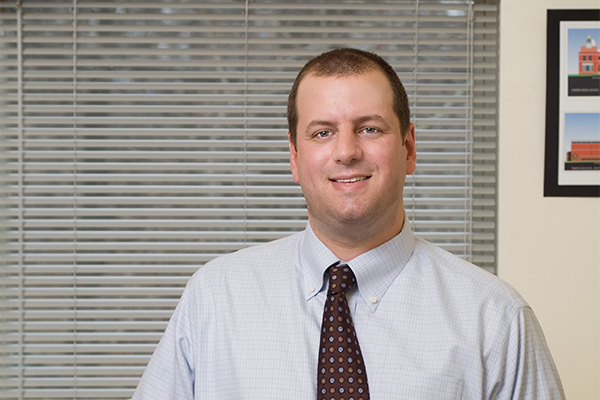
Walt Hauser ‘96 has been a part of the Trinity-Pawling community in one way or another for his entire life. “Most of my fellow alumni know me as one of Mr. and Mrs. Hauser’s kids–not a member of the Class of ‘96,” says Hauser. “My brother and I were always around campus playing in the former student lounge in Cluett or riding our bikes around the Quad.” His transition from faculty kid to student was natural and something he never took for granted. “Attending T-P was a tremendous opportunity and, understanding that, pushed me to work harder in the classroom, on the field, and in service to my community. Without question, the work ethic and expectations instilled at T-P have helped me throughout my career,” Hauser says.
Hauser went on to attend Trinity College where he majored in Psychology and defined his own minor in Architectural Studies, an interest that was sparked by the architectural drafting class he took while at Trinity-Pawling, taught by his father. The formal start to Hauser’s architectural studies was attending the Harvard Graduate School of Design Career Discovery program after graduating from Trinity. From there he completed a master’s degree in Architecture at the University of Pennsylvania, with some time spent at the Bauhaus University in Germany. The vast majority of his professional career has been spent working at KG+D Architects out of Westchester County.
When Trinity-Pawling was considering planning the construction of Scully Hall, KG+D offered to help the School make the project a reality by donating a preliminary conceptual design. Since then, KG+D’s professional relationship has included services for the Campus Master Plan, Coratti Field, tennis courts, and Smith Field House. “The three partners at KG+D value community service and keep strong ties in particular to our alma maters (one of them is Hotchkiss!),” Hauser says. “Certainly our role as designers is primarily to assist the School in creating facilities that are appropriate for the community, functional, and aesthetically pleasing,” Hauser adds. “At T-P we look to create traditional exteriors and signature spaces within. Most importantly, we want the buildings to be a place where the community can thrive.”
Follow the Smith Field House progress here.
